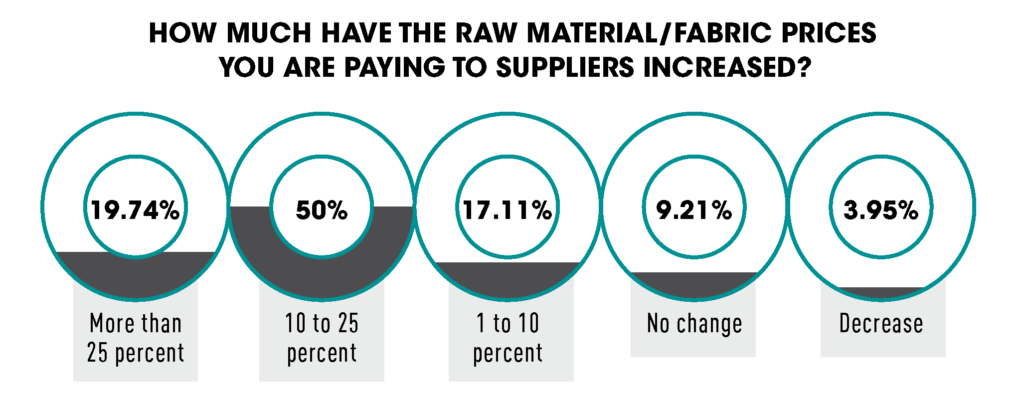Textile industry prospers in 2022 despite challenges
After two years of uncertainty and global crises, the industrial fabrics industry is prospering, according to the 2022 State of the Industry Report conducted by the Advanced Textile Association (ATA, formerly IFAI). Nearly 300 ATA members responded to the annual survey. Despite some ongoing challenges, most respondents believe the future looks positive.
A sunny outlook, with some clouds
A majority (53%) of respondents reported their revenue had gone up compared with 2021, with 32% of respondents seeing an increase of more than 10% from the prior year. However, revenue had decreased for 21% of respondents, with 12% reporting their revenue declined by less than 10%.
The pandemic meant 2021 was a “perfect storm” of unpredictable factors. These include inflation, supply chain delays, maintaining or increasing production capacity and increased shipping costs. Nearly three-quarters of survey respondents reported being affected by:
• The struggle to find skilled workers.More than half continued to have trouble filling both full- and part-time positions.
• Increased remote work options. 31% said that between 50 and 74% of their employees were now working remotely. More than 62% of respondents expected COVID-related concerns to continue throughout the year.
• Increasing prices charged to customers. Nearly half (49%) raised prices by 10 to 20%, while 13% of respondents raised prices by more than 25%. Less than 8% have seen no price increases. Nearly 63% said they were passing on costs from suppliers. Other reasons included higher taxes or other government fees (31%), increased wages for employees (58%), higher rent or facility costs (29%) and investing in new equipment (24%).

Future growth pegged to supply chain
Looking to the future, 60% of respondents said the two most important factors for business growth in the next two years were improvements to the supply chain and logistics. Also on the list: Implementing automation (49%), employee development programs (50%), product diversification (45%), and research and development of new products (53%). Nearly 48% of survey respondents expected to enter a wide variety of new markets in the next few years.
 TEXTILES.ORG
TEXTILES.ORG 





